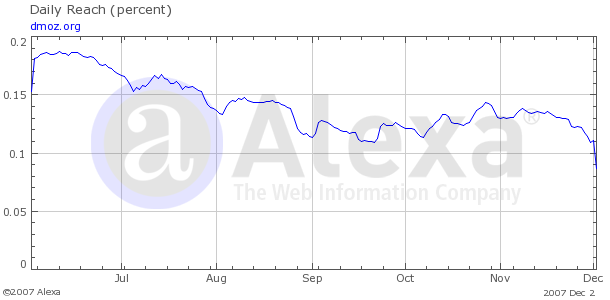By putting different pieces together we have just realized that all the funding for the so called credit card alternative BillMeLater totals $1 Billion. Pretty impressive at first sight but on second reading we guess it is in norms for a financial company with such ambitious goals and operations.
BillMeLater is a young seven-year-old company that is taking on the major competitors, including MasterCard, Visa and  PayPal, which made its name as an online payment provider. BillMeLater has landed as merchants some of the most popular on-line retailers like www.Overstock.com, www.Walmart.com, www.usairways.com, www.officemax.com, www.brookstone.com, www.continental.com, www.etoys.com, www.hotels.com, www.1800flowers.com among others. Amazon will be offering the payment option as well.
PayPal, which made its name as an online payment provider. BillMeLater has landed as merchants some of the most popular on-line retailers like www.Overstock.com, www.Walmart.com, www.usairways.com, www.officemax.com, www.brookstone.com, www.continental.com, www.etoys.com, www.hotels.com, www.1800flowers.com among others. Amazon will be offering the payment option as well.
The company incorporated initially as I4 Commerce and has changed its name to Bill Me Later, Inc. in 2007.
Bill Me Later, Inc. has developed and operates the PayCapture® technology platform and its suite of credit tools including its flagship Bill Me Later®–the first new payment method since credit cards to be broadly available within the United States.
Managed by a team of industry leaders, the Bill Me Later® Payment Suite allows merchants to leverage payments as a strategic tool to enhance customer loyalty, drive higher sales and expand profit margins.
Bill Me Later, Bill Me Later Business, the Preferred Account Program, and Promotional Financing tools are the first in a series of solutions designed to help merchants meet the demands of an increasingly competitive marketplace. Leveraging existing infrastructures, most merchants can fully deploy these next-generation credit tools in a matter of weeks as opposed to the months it can take to set up other payment methods or private label accounts.
Millions of consumers rely on the safety and convenience of Bill Me Later, Inc.’s payment solutions when shopping online, via catalog and in-store to help save both time and money.Â
On the consumer part it is:
Bill Me Later is the new way to pay that’s simple, fast and secure.Â
Easy and Convenient
Bill Me Later is a convenient and secure new payment method designed for purchasing on the web or over the phone. As a credit account, Bill Me Later provides you with the flexibility to purchase without using your credit card. To request a Bill Me Later account, you do not have to complete a lengthy application prior to making a purchase. Simply select Bill Me Later at checkout to complete your request.
Security You Can Count On
With no card number for making purchases and no physical card, Bill Me Later gives you an extra level of security. Plus, Bill Me Later offers “zero fraud liability” protection, which means you are not responsible for unauthorized charges.
It operates much like a credit card company largely because its founder and chief executive Gary Marino has a long credit card pedigree, having served as chief credit officer for both First USA/Bank One and Citigroup. He started Bill Me Later after an investor suggested that online billing options be as simple as the “bill me later” tear-out form that comes inside magazines.
Revenues
It is the sixth-fastest-growing company in the country by revenue – on track to bring in more than $100 million this year – according to Inc. magazine’s September issue. No information publicly available whether the company is profitable.
The People
Gary Marino is the company’s chief executive officer and founder. Gary has over 20 years of experience in the credit card industry with expertise in credit management, marketing, Internet strategy development, and general management.
Prior to joining Bill Me Later, Inc., Gary was Executive Vice President, Chief Credit Officer, and Chief Marketing Officer of the consumer lending division at First USA/Bank One. Gary also held numerous executive positions in his 13 year career with Citibank’s European and North American Card Division. These include Chief Credit Officer and member of the Bankcards Executive Planning council.
Other executive include
- Steve Burleson – Chief Financial Officer
- Craig Eckstrom – VP Sales and Account Management
- Carolyn Groobey – Head of Consumer Strategy
- Adam Joffe – Chief Information Officer
- Tom Keithley – VP Credit and Integration
- Mark Lavelle – VP Corporate Development & Strategic Planning
- Bill Seligman – VP Credit Operations
- Bill Shupert – VP Human Resources
- Vince Talbert – VP Marketing
- Marita Ventura – Chief Technology Officer
- Chris Williams – VP Consumer Marketing
Investors & Tranches
The company, which is about 7 years old, has received $200 million in venture capital funding from investors such as Chase Paymentech and Azure Capital Partners, as well as a $640M credit line from Citigroup. The past month BillMeLater raised a whopping amount of $72 Million as well. The past week Amazon.com has just put yet another amount into the company as terms of the deal were not disclosed. Earlier last year the company secured $27.4 Million in Venture Funding.
Some of the investors as included below with short bios and company information.
ChasePaymentech is the payment solutions company of choice for online and offline transaction processing. A leader in the industry for more than sixteen years, ChasePaymentech processes one out of every two U.S. Internet transactions. ChasePaymentech is also a strategic investor in Bill Me Later, Inc.
Azure Capital Partners was founded in April 2000 with a focus on infrastructure technologies. Their philosophy of investing is to support and accelerate companies throughout their lifecycle of growth, ranging from early seed stage through maturity in the public markets.
GRP Partners is a global venture capital firm focused on retailing, retail technology and financial services technology. With $650 million under management, GRP finances early-stage and late-stage companies that develop solutions meeting pressing customer needs.
First Data Corporation processes payments for 312 million accounts around the world. As the leader in payment services, First Data serves approximately 3 million merchant locations and 1,400 financial institutions. First Data also provides consumer account processing services for Bill Me Later® and is a strategic investor in Bill Me Later, Inc.
Crosspoint Venture Partners invests in virtual service providers and broadband infrastructure. With over $1 billion under management, Crosspoint was recently named the #1 venture capitalist based on three – year returns.
CIT Group Inc. (NYSE: CIT), a leading commercial and consumer finance company, provides clients with financing and leasing products and advisory services. CIT, a Fortune 500 company and a member of the S&P 500 Index, holds leading positions in cash flow lending, vendor financing, factoring, equipment and transportation financing, Small Business Administration loans, and asset-based lending. With its global headquarters in New York City, CIT has approximately 7,500 employees in locations throughout North America, Europe, Latin America, and Asia Pacific.
Citigroup Corporate and Investment Banking is the most complete financial partner to corporations, financial institutions, institutional investors and governments in the world. As a global leader in banking, capital markets, and transaction services, with a presence in many countries dating back more than 100 years, Citigroup Corporate and Investment Banking enables clients to achieve their strategic financial objectives by providing them with cutting-edge ideas, best-in-class products and solutions, and unparalleled access to capital and liquidity.
Citigroup (NYSE: C), the leading global financial services company has some 200 million customer accounts and does business in more than 100 countries, providing consumers, corporations, governments and institutions with a broad range of financial products and services, including consumer banking and credit, corporate and investment banking, securities brokerage, and wealth management. Major brand names under Citigroup’s trademark red umbrella include Citibank, CitiFinancial, Primerica, Smith Barney and Banamex.
Equifax is today’s number one provider of real-time consumer information with the world’s largest repository of consumer credit information.
T. Rowe Price: Founded in 1937, Baltimore-based T. Rowe Price is a global investment management organization that provides a broad array of mutual funds, subadvisory services, and separate account management for individual and institutional investors, retirement plans, and financial intermediaries. The organization also offers a variety of sophisticated investment planning and guidance tools. T. Rowe Price’s disciplined, risk-aware investment approach focuses on diversification, style consistency, and fundamental research.
Legg Mason, Inc.: Legg Mason, Inc. is a global asset management firm, with over $1 trillion in assets under management as of September 30, 2007. The Company provides active asset management in many major investment centers throughout the world. Legg Mason is headquartered in Baltimore, Maryland and its common stock is listed on the New York Stock Exchange (symbol: LM).
Via
[ http://www.bill-me-later.com/wss/help/aboutus.do ]
[ http://www.techcrunch.com/2007/12/11/amazon-invests-in-bill-me-later/ ]
[ http://biz.yahoo.com/bw/071211/20071211005292.html?.v=1 ]
[ http://www.corporate.billmelater.com/billmelater/Content.do?pageID=15 ]
[ http://corporate.billmelater.com/ ]
[ http://www.bill-me-later.com/wss/index.do ]
[ http://www.baltimoresun.com/business/bal-bz.billmelater04dec04,0,4892376.story?page=1&coll=bal-technology-headlines ]
[ http://www.fool.com/personal-finance/credit/2007/11/26/profit-from-holiday-credit.aspx ]
[ http://www.washingtonpost.com/wp-dyn/content/article/2007/11/27/AR2007112702246.html ]
[ http://corporate.billmelater.com/billmelater/FilesInline.do?file=Citi Financing (2).pdf ]
[ http://corporate.billmelater.com/billmelater/FilesInline.do?file=funding03_28_06.pdf ]
[ http://corporate.billmelater.com/billmelater/FilesInline.do?file=Bill Me Later Inc. Announcement.pdf ]



 He is the author of several articles in this area, including the book Fuzzy Systems Design Principles published by IEEE in 1997. Before launching hakia, Dr. Berkan worked for the U.S. Government for a decade with emphasis on information handling, criticality safety and safeguards. He holds a Ph.D. in Nuclear Engineering from the University of Tennessee, and B.S. in Physics from Hacettepe University, Turkey. He has been developing the company’s semantic search technology with help from Professor Victor Raskin of PurdueUniversity, who specializes in computational linguistics and ontological semantics, and is the company’s chief scientific advisor.
He is the author of several articles in this area, including the book Fuzzy Systems Design Principles published by IEEE in 1997. Before launching hakia, Dr. Berkan worked for the U.S. Government for a decade with emphasis on information handling, criticality safety and safeguards. He holds a Ph.D. in Nuclear Engineering from the University of Tennessee, and B.S. in Physics from Hacettepe University, Turkey. He has been developing the company’s semantic search technology with help from Professor Victor Raskin of PurdueUniversity, who specializes in computational linguistics and ontological semantics, and is the company’s chief scientific advisor.

 founded by Michael Arrington from
founded by Michael Arrington from 
